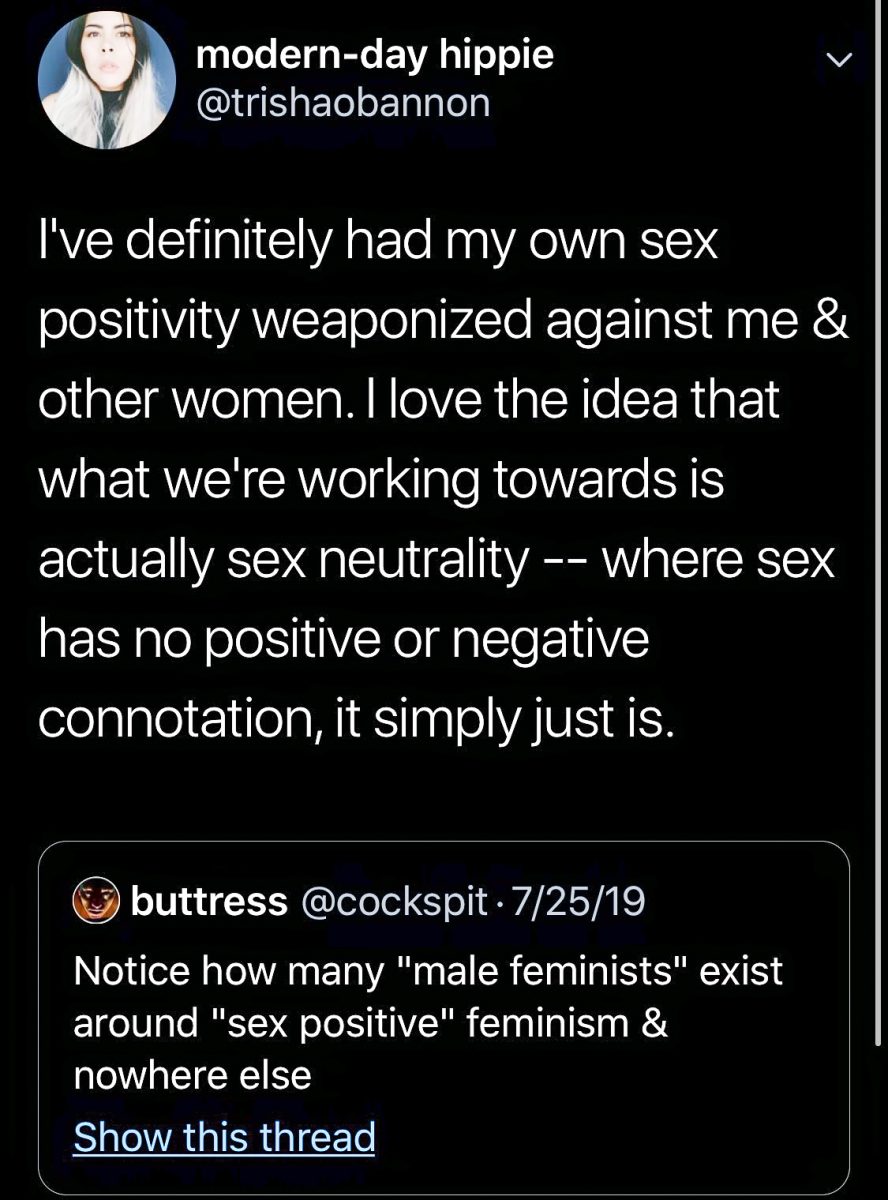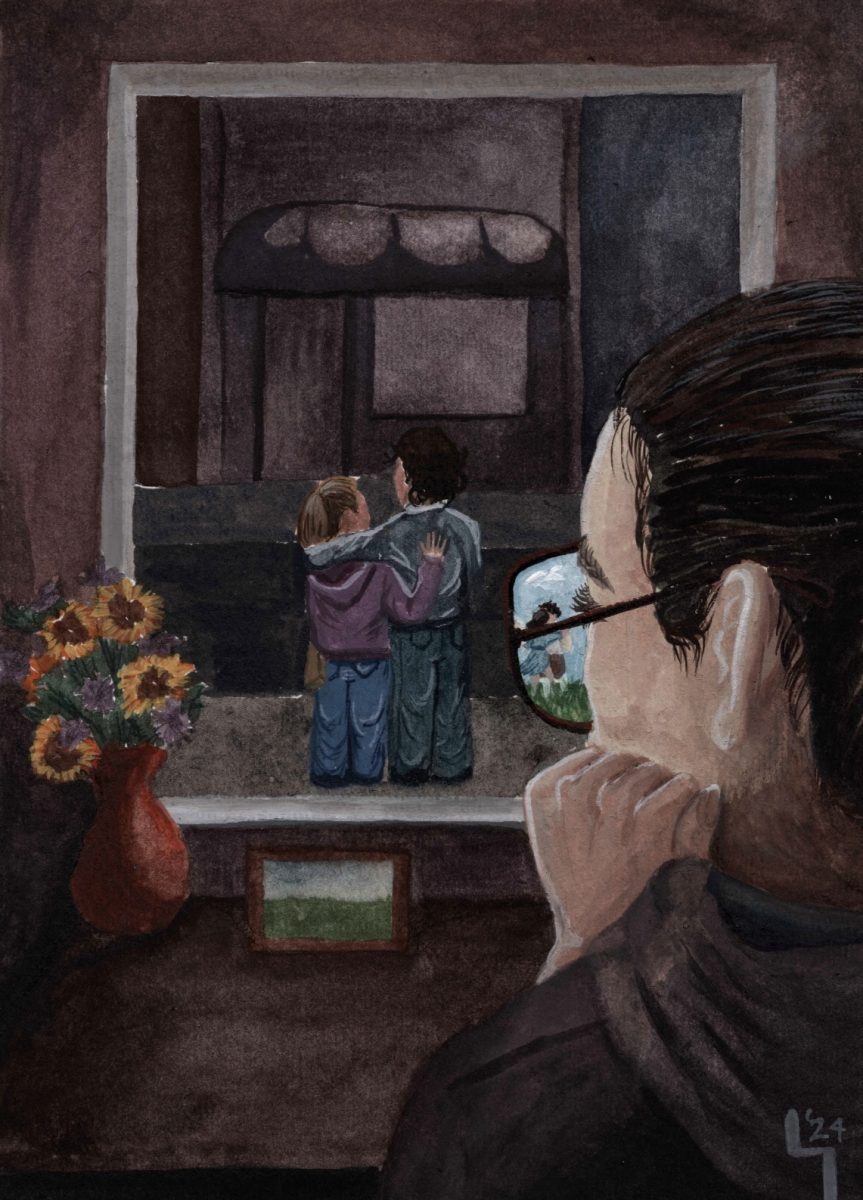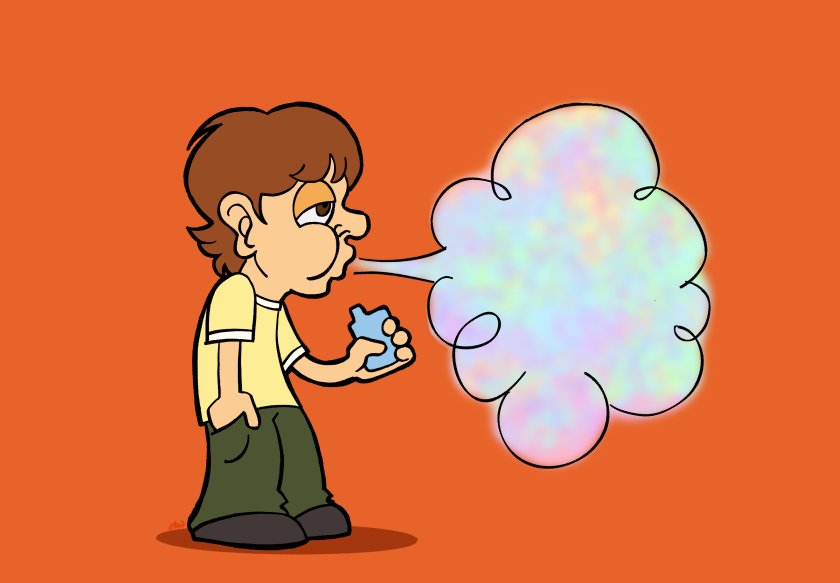Recently, more and more women have come forward to share their experiences with the sex positive movement as adolescents. It wasn’t until I discovered a popular thread on Twitter in which women were detailing their teenage missteps, insecurities and traumatic misfortunes related to the ideas of sex positivity that I realized my own story was not dissimilar.
I remember being 14 when I first encountered the sex positive movement in the form of viral Tumblr threads that plastered my feed. The ideas and, more importantly, the aesthetics of the movement were unlike anything I had ever encountered or even conceived. It was there that, for the first time, I saw girls who were only a few years older than me running accounts that promoted and indulged in promiscuity, pornography and entire pages dedicated to their own monetized lewd content. This initially shocked me, having only a vague and self-limited concept of female sexuality. But what should have been extreme perversion to my abstinence-trained mind soon became a sort of feminist curiosity. I liked the idea that this part of me that I had been taught to shun was actually my tool to feel confident as I entered the world of boys, dating and relationships.
At its best, the sex positive movement was a push for women to own their sexualities and feel empowered through their own bodily autonomy. This alone is not only an attractive cause, but also a generally positive one given the historic stigmatization of things like premarital sex and even just open dialogue about female sexuality. However, at its worst, it was a movement that glamorized sex work, shamed asexuality, and encouraged girls to question or disregard their personal boundaries when it came to exploring the sexual world, leaving them vulnerable to manipulation.
As for me, it took a long time to understand myself outside of a “sexual marketplace.” As a teen, I was basically obsessed with my perceived sexuality in a way that imprisoned me and all my decisions. This was especially catalyzed when I entered my first high school relationship. I put so much pressure on myself to be the sex positive woman that I saw everywhere online and in pornography (a form of media and career that was largely glamorized by sex positivity). This woman wasn’t just positive about sex, she was pro-sex, with a seemingly infinite libido. This ideology planted the seeds that a toxic, abusive relationship could only water. Instead of recognizing that my limits were not there to be pushed, I often asked myself: Why don’t I want this? This is what a sexually liberated woman acts like, isn’t it? I thought I was holding the reins, but instead I was a voyeur, watching my own sexual life become a teen boy’s fantasy and nothing more. My sexuality was no longer mine.
The issue is that the sex positive movement addressed all the wrong things about societal sexual taboo. It placed the onus on the woman to “defy her fears” instead of dismantling the patriarchal and puritanical structures that caused them in the first place. Paired with the absence of comprehensive sex education (that’s not just centered around abstinence), imploring women to engage in heedless sex in the name of liberation leaves young girls vulnerable to manipulation, grooming and increased risk of sexually transmitted disease.
The sex positive movement has also been criticized for ultimately encouraging girls to “think like a man” about sex. In the search for sexual empowerment, there was a push towards this sort of aromantic aloofness that de-emphasized the necessity of trust between two people before engaging in sexual activity. This approach, however, is often characteristic of the worst stereotypes of male heterosexuality. Though both men and women can engage in aromantic sexual activity and feel perfectly fulfilled, it is not any more productive for women than it is for men to encourage this approach as the ideal standard, meanwhile shaming others for attaching emotional significance.
So where do we go from here with the sex positivity movement? In recent years, feminist critiques of the movement have surfaced, allowing for a redefined version of what it means to be sex positive. Now, sexual empowerment can look like a lot of different things beyond strictly pro-slut narratives, self-commodification and sex work. Even those who feel no sexual desire, asexuals, can be sex positive. It is a broader attitude of acceptance toward being sexually visible and autonomous as a woman. I wish this was the prevailing mode that I encountered so many years ago, but instead, me and many other girls are still piecing our sexualities back together to reflect our own ideas of empowerment. The next step for the sex positive movement is to further understand the source of sexual repression felt among women and educate others on the importance of fully consensual safe sex. Until a woman’s sex life can escape the fog of misinformed pornographic depictions and shameful sex education, she will be embracing an image of female sexuality that isn’t even her own.
The sex positive movement was dangerous for young women
October 7, 2019
0
Donate to The Battalion
Your donation will support the student journalists of Texas A&M University - College Station. Your contribution will allow us to purchase equipment and cover our annual website hosting costs.









